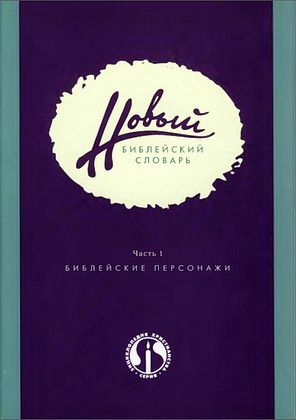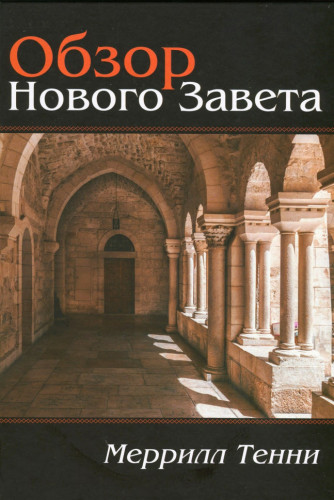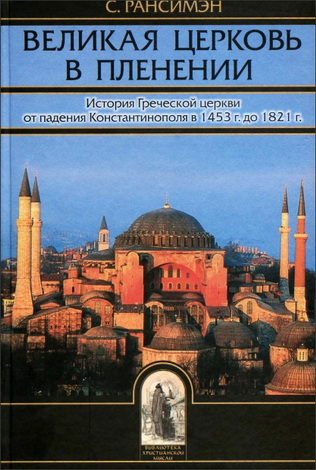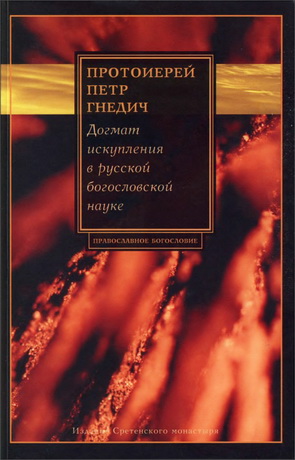
Fohrer – History of Israelite Religion
Gustav Holscher’s Geschichte der israelitischen und jiidischen Religion, published as part of the “Sammlung Topelmann” series in 1922, has long been out of print. Friedrich Horst had expressed his willingness to undertake a revision of Holscher’s work, but he died before he was able to set about the task. Johannes Hempel, who began the revision, was able to complete only a small portion of the planned work before his death.
Finally, despite many other plans and obligations, I undertook the job, so that a new presentation of the history of Israelite religion, which has long been needed, could be published in the “de Gruyter Lehrbuch” series without further delay. I have limited myself, however, to bringing the presentation down to the period portrayed by the latest books of the Old Testament. Its continuation, in the form of a history of the Jewish religion, has been taken over by J. Maier.
I do hope, however, that I shall be able to publish a theology of the Old Testament within a few years of this history of Israelite religion. In order to keep the size of this book within reasonable limits, I have had to treat many questions quite briefly. The reader will find further material in the literature cited, including lexicon and encyclopedia articles; the bibliographies have been made as extensive as possible. In addition, the discussion in §§ 14, 15, and 17 in particular holds true generally for the late period of Israelite religion, too. Since the topics are dealt with in toto in these paragraphs, references from the exilic and post-exilic periods are frequently given. I should like to express my gratitude first of all to Frau Hildegard Hiersemann for her indefatigable patience in producing the manuscript.
I am also grateful to my assistants for their willing help, espedally to Vicar Hans Werner Hoffman, who reviewed the manuscript in detail, helped correct the galleys, and planned and supervised the indexing, and to Dr. Gunther Wanke, who helped read the page proofs and furnished much other valuable assistance, and finally to Ulrike Engert, stud, theol., who produced the indexes. They all contributed significantly to the prompt and accurate publication of this book.
Georg Fohrer – History of Israelite Religion
Translated by David E. Green
Abingdon Press – 424 p.
New York – 1972 y.
ISBN 0-687-17225-X
Georg Fohrer – History of Israelite Religion – Contents
- Bibliographic Information and List of Abbreviations
- § I Introduction
- 1. The study of Israelite religion (17). 2. Purpose and sources (23).
Part One
- The Religion of the Early Period CHAPTER ONE: THE RELIGIOUS BACKGROUND
- § 2 The Religious Substratum and the Religion of the Nomadic Tribes
- 1. Historical background (28). 2. The Israelites as nomads (30). 3. The religious substratum (33). 4. The tribal religion of the early Israelites (35).
- 5. The position of the patriarchs (41).
- § 3 Canaanite Religion
- 1. Ugarit and Canaanite religion (43). 2. Canaanite gods (47). 3. Canaanite myths and legends (55). 4. Canaanite worship and religious life (57).
- § 4 The Religion of the Early Israelites in Palestine
- 1. The occupation and its consequences (60). 2. The encounter between nomadic and Canaanite religion (62).
CHAPTER TWO: MOSAIC YAHWISM, THE FIRST INFLUENCE
- § 5 Traditions, Events, and Figures
- 1. Traditions concerning the beginnings of Yahwism (66). 2. Historical development (68). 3. The significance of Moses (74).
- § б Mosaic Yahwism
- 1. Yahweh (75). 2. The relationship between God and man (80).
- 3. Worship and ethics (82). 4. Further development (85).
CHAPTER THREE: YAHWISM IN PALESTINE BEFORE THE ISRAELITE STATE
- § 7 The Historical and Religious Background
- 1. Adoption and expansion of Yahwism (87). 2. The problem of the sacral tribal league and Israel as the people of Yahweh (89). 3. The period before the Israelite state (94).
- § 8 The Conflict Between Yahwism and Nomadism
- 1. God’s sovereignty and power (97). 2. God’s association with his people (97). 3. Religious consequences and changes (98).
- § 9 The Conflict Between Yahwism and Canaanite Religion
- 1. Basic considerations (102). 2 Yahweh and the gods of Canaan (103).
- 3. Worship (105).
- History of Israelite Religion
- § 10 Israelite Religion Before the Israelite State
- 1. Yahweh and the ark (106). 2. Worship (Ш). 3. Historical traditions and law (118). 4. Consequences (121).
Part Two
The Religion of the Monarchy
CHAPTER ONE: KINGSHIP, THE SECOND INFLUENCE
- § 11 Events and Figures
- 1. Saul’s kingship (124). 2. David and Solomon (125). 3. To the beginning
- of Assyrian ascendancy (130). 4. The period of Assyrian ascendancy (134).
- 5. The beginning of the Diaspora (136). 6. Literary consequences (137).
- § 12 The Religious Conception and Significance of the Monarchy
- 1. Consequences of the monarchy. (140). 2. The nature of kingship in Israel (142). 3. Limitation and rejection (149).
CHAPTER TWO: YAHWISM IN THE PERIOD OF THE MONARCHY
- 13 Religious Movements
- 1. Basic considerations (152). 2. The survival of ancient Yahwism and the conservative approach to life (152). 3. The magical approach to life (155).
- 4. The cultic approach to life (156). 5. The nationalist approach to life (159). 6. The wisdom approach to life (161). 7. Shared characteristics
- (163).
- § 14 Yahweh and the Divine Realm
- 1. Yahweh and his manifestations (164). 2. Yahweh and the gods (172).
- 3. Heavenly beings and demons (173).
- § 15 Yahweh and the Earthly Realm
- 1. Nature, creation, and primordial events (177). 2. Yahweh as governor of history (182). 3. Yahweh and Israel (184). 4. Man before Yahweh (188).
- § 16 Worship
- 1. General considerations (196). 2. Cultic sites (197). 3. Feasts and festivals (201). 4. Performance of the cult (205). 5. Cultic personnel (201).
- 6. Further development and criticism (214).
- § 17 Life and Death
- 1. Man as a living creature in this world (214). 2. Life and death (216).
- 3. After death (217).
CHAPTER THREE: PROPHECY, THE THIRD INFLUENCE
- § 18 Prophecy in the Ancient Near East and in Israel to the
- Ninth Century b.c
- 1. Prophecy in the ancient Near East (223). 2. Early Israelite prophecy (228). 3. Elijah (230). 4. Elisha (231). 5. Primitive features (232).
- § 19 Israelite Prophecy in the Eighth and Seventh Centuries b.c
- 1. The later history of pre-exilic prophecy (236). 2. Prophetical experience
- and ministry (238). 3. Amos (243). 4. Hosea (246). 5. Isaiah (251).
- 6. Micah (257). 7. Zephaniah (258). 8. Jeremiah (260).
- § 20 The Approach to Life of the Great Prophets
- 1.The content of the prophetical message (268). 2. Prophetical criticism (274). 3. Relationship to tradition (282). 4. Relationship to other reli-gious attitudes (286). 5. The place of the great prophetical figures in the history of religions (289).
CHAPTER FOUR: DEUTERONOMIC THEOLOGY, CONSEQUENCE AND FOURTH INFLUENCE
- § 21 Religious Developments 292
- 1.Background and early history (292). 2. Josiah’s reformation (295).
- § 22 Theology and Life According to Deuteronomic Principles 296
- 1.Deuteronomic theology (297). 2. Life under the Deuteronomic law (300).
- § 21 The pre-exilic Deuteronomistic school (303).
- Part Three
- The Religion of the Exilic Period
- § 23 The Religious Situation
- 1. The situation and the evidence (307). 2. Palestine (309). 3. Exile and Diaspora (311).
- § 24 Exilic Prophecy and Incipient Eschatology, the Fifth Influence 316
- 1. Ezekiel (316). 2. Other prophets (321).3. Deutero-Isaiah (322).
- 4.Beginnings of eschatology (327).
Part Four
The Religion of the Post-Exilic Period CHAPTER ONE: EARLY POST-EXILIC PERIOD
- §25 Events and Figures
- 1. Return, rebuilding of the Temple, and religious attitude (330). 2. Early post-exilic prophecy (334). 3. Outcome (336).
- § 26 Development of Eschatology
- 1. Eschatological events (337).2. The structure of eschatology (340).
- 3. Messianic expectation (347). 4. Outcome (352).
CHAPTER TWO: LATE POST-EXILIC PERIOD
- § 27 Events, Figures, and Religious Attitudes
- 1. The crisis of the Jerusalem community and Malachi (354). 2. The Priestly Document (355). 3. Nehemiah and Ezra (357). 4. The period after Ezra’s reform (359). 5. The Samaritan community (368). 6. The Maccabean period and apocalypticism (369).
- §28 Objects and Contents of Faith
- 1. Yahweh and angels, Satan and demons (372). 2. Yahweh, the world, and man (375). 3. The law (377). 4. Temple cult and synagogue worship (379). 5. Man’s fate after death (385).
- Indexes
- 1. Index of Passages (391). 2. Index of Hebrew Words (409). 3. General Index (410).
Georg Fohrer – History of Israelite Religion – Prophecy, the Third Influence
All in all, Jeremiah developed the message of his predecessors along his own lines: a personal relationship with God proceeding from the tension between God and man, a communion with God based on reciprocal interaction, finding its expression especially in prayer, a profound surrender of the whole man to God, a surrender refined through crisis; a fundamental understanding of sin not as an individual lapse but as a basic perversion of human life; thus all the more imperatively the call to repentance and then, since God is not only righteousness but also and above all love, the change to a belief in redemption that anticipates a genuine communion with God, at the same time achieving the goal of God’s sovereignty.
We know of a few other prophets belonging to the period of Jeremiah, three of whom must be briefly mentioned. Nahum primarily voiced threats against Nineveh, the Assyrian capital (shortly after 626). His preaching exhibited genuinely prophetical insights when he acknowledged Yahweh as lord of the nations, spoke of Assyria’s mandate to punish Judah, and rebuked Assyrian policies as being contrary to God’s will, threatening an end to the Assyrian Empire. But he was primarily a representative of optimistic prophecy with a strongly nationalistic bias, which out- weighted the cultic element. To his way of thinking Yahweh acted exclusively with reference to Judah, promoting its interests for the benefit of all Israel.
In many ways Nahum came suspiciously close to the line dividing false from true prophecy. Habakkuk, who also prophesied the downfall of Assyria, may be dated a little later than Nahum, but still prior to 622. He was a cult prophet to whom Judah was the “righteous” (2:4), to whom he promised help but without requiring humble penitence and return to Yahweh. He did not look upon Yahweh’s righteousness as a demand upon his people, but as being directed solely against the wicked powers of the world.





Комментарии
Пока нет комментариев. Будьте первым!